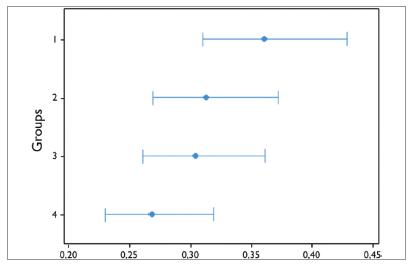ABSTRACT
Objective:
The purposes of this study were to present a prototype of a bracket-positioning gauge, which makes vertical inclination of the instrument difficult, allowing a reduction of vertical bracket positioning error, and to test its accuracy in bracket positioning by groups of individuals with different clinical experience and in specific groups of teeth.
Methods:
For the testing of the prototype, four groups of six participants each were used: Group 1 was composed of undergraduate students in the dental school, who had no previous experience in bonding orthodontic attachments; Group 2 was composed of orthodontic graduate students in the dental school; Group 3 consisted of orthodontists with a maximum of 5 years of clinical experience; Group 4 comprised orthodontists with more than 5 years of clinical experience. A typodont was simulated with a Class I crowded malocclusion, which reproduced the same occlusal characteristics for all groups to be bonded. All participants were instructed to bond 0.022×0.028-in Edgewise brackets on the labial surfaces of the upper and lower incisors, canines, and premolars at a height of 4 mm from the incisal edge or the labial cusp tip.
Results:
Only the mean value of Group 1 showed statistically significant difference in the comparison with the standard measurement. In the groups of teeth, the difference was significant for the premolar and incisor groups.
Conclusion:
Clinical experience interfered with the accuracy of vertical positioning of orthodontic attachments. As for the groups of teeth, premolars, followed by canines and incisors had the closest mean values to the standard measurement.
Keywords:
Orthodontics; Orthodontic brackets; Orthodontics, corrective; Patents.







